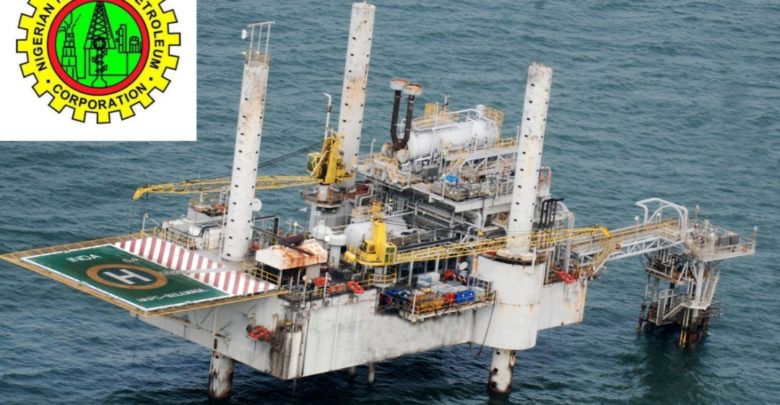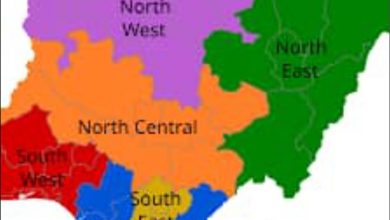
The recent estimation of February 19, 2020 by the Department of Petroleum Resources (DPR) that the nation’s crude oil reserves of 37billion barrels, two percent of which is being produced annually, will be depleted in the next 49 years, should be of great concern to the Nigerian leadership, and Niger Deltans in particular.
Globally, equivalent of over 11bilion tonnes of oil from fossil fuel are consumed every year. Yet crude oil is said to be vanishing at a rate of more than 4bilion tonnes a year. According to John Vidal of the US Guardian newspaper, basing his report on a London-Based Oil Depletion Analysis Centre by Colin Campbell “The end of oil is closer than you think”. Oil depletion is the decline in oil production from an oil well or field. The forecast by DPR is therefore in tandem with unfolding realities.
Already, according to OPEC 2016 Annual Statistical Bulletin, 10 countries are said to be running out of oil. These include Brazil, China, Malaysia, Angola and Indonesia. Others are Mexico, United States, Norway, United Kingdom and Colombia. Whereas oil has not completely dried up in these places, what is left is said to be a cause for worry. Indeed, according to Tyler Crowe, the world’s picture is that “we have way more than 53 years’ worth of oil.”
This becomes even more of a problem to Nigeria as crude oil accounts for about 90 percent of her foreign exchange earnings and 10 percent of its Gross Domestic Products (GDP). Of course, from the period of 1956 when oil was discovered in a small village called Oloibiri in then Rivers State (now in Bayelsa) down through to 1958 when actual oil exploration and exploitation began in the Niger Delta, the country has totally abandoned agriculture that once sustained and gave it complementary economic fame. Its mainstay from that period till date almost automatically and mindlessly became oil.
That is to say by inference that the Niger Delta has been the sole bread winner of the country in the last sixty-three years. It has become the common pool and fountain upon which leaders and the privileged in political and business circles have built their empires and fortune for the present and future. Another aspect of worry is the fact that the delta where the oil has been taken arguably has had nothing commiserate and convincing to show for its contributions to the country.
RELATED: Niger Delta Community Threatens Disruption of Oil Drilling Activities
In spite of all genuine and superficial efforts supposedly made over the years by successive administrations in the Niger Delta, the level of poverty, deprivation, degradation and associated negative environmental impacts have been described by objective observers as mind-boggling and pitiable. Therefore, the threat and possibility of oil drying up is most likely to affect this area than any part of the country.
The DPR anchored its findings and projections on cumulative statistics over the years. According to the regulator, the reserves which stood at 37.45billion barrels in 2014 experienced a drop to 37. 06 billion barrels in 2015 and a further drastic downward tilt to 36.74 billion barrels in 2016. As if anything auspicious, the level rose again to 36.97 billion barrels in 2017 and 37billion barrels in 2018.
By the calculation of the DPR, “The nation’s depletion rate and life index are 2.04 percent and 49. 03 years respectively”. It stated that the reserves depletion rate is a measure of 2018 total oil and condensate production divided by the reserves as of 1st of January 2019. This analysis therefore provides an insight on annual basis, what percentage proportion of the referred reserves for the period was produced.
On the other hand, the DPR also opened a window into what constitutes the life index. It is calculated as “a measure of the reserves as of January 1, 2019, divided by the total production in 2018. This parameter highlights how long (in years) quoted reserves volumes will be available for production”.
The Nigerian government targets four million per day production and reserves of 40 billion barrels. The DPR said to get to the nipple of this aspiration, “There is need for corresponding increase in reserves as production increases”. The implication for any failure to do this, “The life index will fall from a sustainable long-term threshold to a loss futuristic and sustainable medium to short-term range,” DPR observed.
There are many partners and partnerships in oil business in Nigeria. The nation’s oil and gas architecture is structured in such way that functions are shared and it is split largely between Joint Ventures onshore and in shallow waters where both foreign and indigenous companies partner. There is also what is called Production Sharing Contracts in deepwater offshore. This has been the main attraction to IOCs in recent times, and there can be no doubts that it is paying considering the heavy portfolio of investment.
According to expert analysis by The Punch newspapers, extrapolation shows that the Joint Ventures enjoys the highest production of about 41.64 percent in the spread of contract dynamics. However, the DPR disclosed that the JVs recorded a low depletion rate of about 1.8 percent and high life index of 56.34 years. To the contrary, while the JV records this low rate, DPR further revealed that the PSC companies had the highest depletion rate of 3.10 percent, with the lowest life index of 32.15 years. It also accounted for about 36.08 percent of the nation’s total production.
The DPR nonetheless gave possible reasons for the differentials in depletion rates. “The companies may have taken advantage of the poor government take in the deep offshore terrain to deplete the reserves therein with little regard for long-term sustainable production as amplified by the life index”, the release stated. Ironically, the sole risk companies recorded the lowest depletion rate of 1.5 percent and the highest life index of 65.49 years.
In summation, according to the DPR, these companies in 2018 accounted for about 20.14 percent of the nation’s total production. DPR said about nine operating companies have oil and condensate life index of less than 15 years. It therefore classified these ones amongst the “unhealthy”.
What then is the connection? What does the future hold? According to the DPR, urgent steps must be taken for a reversal of this scenario, else the future looks bleak. “The statistics paint a very gloomy picture for these companies and urgent steps will be taken to address this observed trend”. DPR said it is proactive about this. “The department is engaging the companies to review their strategic plan to guarantee future reserves growth in order for them to remain in business”. The DPR further stated that as of January 1, 2019, the country’s reserves replacement stood at four percent. Although this holds some positives, it is observed not to be a good performance.
Recall that the Minister of State for Petroleum Resources, Chief Timipre Silver, has aired his concerns over the threat of oil depletion in years to come. He expressed fears over the worsening conditions especially the uncertain fiscal environment that has adversely affected production that would in turn have increased reserves. In his words, “If there is a lot of exploration, we believe that a lot of oil still remains to be found in Nigeria. And that is the beauty about Nigeria. Nigeria is not yet a mature territory; it s still very prolific”.
Seeing a brighter future in the interim, the Minister therefore called for more open doors for investments in the oil and gas sector. “Let us allow the investment to come into Nigeria, because there is still a lot of oil and gas to be found. Unfortunately, the bad news is that the world’s 2020 outlook tells you that by 2040, oil and gas will account for only 50 percent of the energy of the world”. Timipre Silva’s projection might be the reason oil price has not been steady.
Imagine that developed countries of the world are now emphasising on electric cars. By the time this technology reaches Nigeria, it is apparent that attention will be diverted from fuel that is mostly used by vehicles in the country. Of course, as at December 2018, there were about 5.3milion light-duty all-electric and plug-in hybrid vehicles in sue around the world. Wikipedia simply describes an electric car as “an automobile that is propelled by one or more electric motors, using energy stored in rechargeable batteries”.
The observation by the Department of Petroleum therefore must be seen as timely as it is a wake up call for diversification of the Nigerian economy. Experts already say there is need for a tactical, gradual, conscious and supportive reversal to agriculture that once sustained the country than total dependence on oil as it has been the case in the last sixty something years.
Mismanaging the fortunes of the NDDC now will come with worse ripecussive throwback. Yet the question remains: Now that oil has conditioned our worldview in terms of income generation, will Nigerians listen to the clairvoyant voice of reason?




